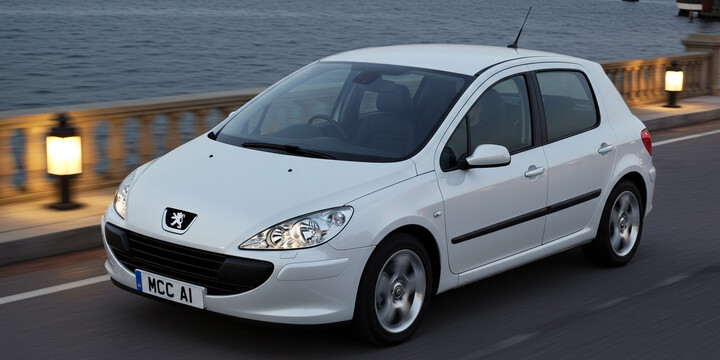
PEUGEOT 307 (2005-07) 3DR HATCHBACK 2.0 16V FELINE
The PEUGEOT 307 (2005-07) 3DR HATCHBACK 2.0 16V FELINE is a compact, stylish hatchback that appeals to drivers seeking a versatile and practical car in the UK market. Known for its distinctive design and comfortable driving experience, this model is well-suited for city commuting, small family outings, or even first-time drivers looking for a reliable vehicle. Its 2.0-litre engine offers a good balance of performance and fuel efficiency, making it a convenient choice for those with daily driving needs.
This particular version, the FELINE trim, often features a more refined interior and added comfort features, setting it apart from standard models. The PEUGEOT 307 has earned a reputation for its solid build quality and manageable size, making it easy to park and maneuver. Compared to its rivals, the PEUGEOT 307 (2005-07) 3DR HATCHBACK 2.0 16V FELINE is frequently chosen for its stylish appearance and user-friendly handling. With an average recorded mileage around 86,747 miles and an average valuation of approximately £1,273 in private sales, this vehicle remains a popular option for budget-conscious drivers looking for a dependable, well-rounded hatchback.

average use

The most recent mileage recordings for the Peugeot 307 (2005-07) 3-door hatchback 2.0 16V Feline show a relatively even distribution across several mileage ranges. Notably, the highest proportion of vehicles, 19%, are recorded between 80,000 and 90,000 miles. There are also significant numbers in the 70,000 to 80,000 miles and 90,000 to 100,000 miles ranges, each comprising 14.3%. Fewer vehicles are documented in the lower mileage brackets, such as 40,000 to 50,000 miles (9.5%), and at higher ranges like 130,000 to 140,000 miles (9.5%). This pattern suggests a typical mileage profile where most vehicles fall within the 70,000 to 100,000-mile window, but the spread across various ranges indicates a diverse mileage history within this vehicle model.

vehicle values

The data indicates that, for the Peugeot 307 (2005-07) 3-door hatchback 2.0 16V Feline model, the majority of private sale prices are relatively affordable. Specifically, approximately 76.2% of the vehicles are sold in the £1,000 to £2,000 range, while about 23.8% are sold for less than £1,000. This suggests that most of these vehicles tend to be valued within the lower to mid-price bracket, which could reflect factors such as age, condition, or market demand for this model.

production years

The data indicates that the majority of the Peugeot 307 (2005-07) 3DR Hatchback 2.0 16V Feline models in our sample were manufactured in 2006, accounting for 66.7%. Vehicles from 2007 make up approximately 33.3% of the sample. This suggests that most of these cars are slightly older models, with a larger proportion having been produced in 2006.

colour popularity

The data indicates that the predominant paint colour for the Peugeot 307 (2005-07) 3-door hatchback in the sample is Silver, accounting for 38.1% of the vehicles. Grey and Red are equally common at 19% each, while Black is slightly more frequent at 23.8%. This suggests that Silver is the most popular colour among this model, with Black being a close second, highlighting a preference for neutral and classic shades among owners.

ownership cycle

The data on registered keepers for the Peugeot 307 (2005-07) 3DR Hatchback 2.0 16V Feline indicates a diverse distribution of ownership. The most common number of keepers is five, accounting for approximately 23.8% of vehicles. Notably, a significant portion of vehicles have four or six keepers, representing 19% and 14.3%, respectively. Smaller groups of vehicles have three, seven, eight, nine, and twelve keepers, each comprising around 4.8% to 9.5%. The variation suggests that many vehicles change hands multiple times over their lifespan, which might reflect their affordability or popularity among different owners.

engine choices

The data indicates that all Peugeot 307 (2005-07) 3DR Hatchback 2.0 16V Feline models in the sample are equipped with a 2.0-liter engine and run exclusively on petrol. This suggests a uniformity across the fleet for this particular vehicle specification, with no variations in engine capacity or fuel type observed in the data.












